




| Home | Features | Club Nights | Underwater Pics | Feedback | Non-Celebrity Diver | Events | 9 May 2025 |
| Blog | Archive | Medical FAQs | Competitions | Travel Offers | The Crew | Contact Us | MDC | LDC |

|

|
 
 |
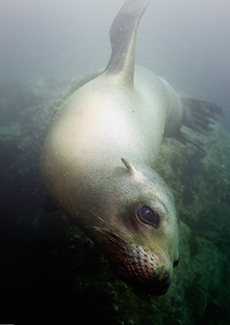 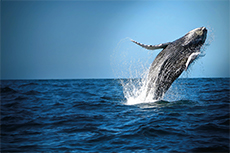 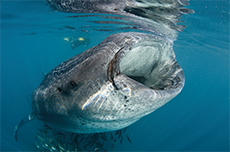 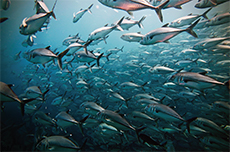 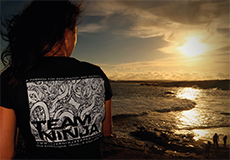 ISSUE 24 ARCHIVE - EXPLORING THE WORLD'S AQUARIUMJay CluePicture diving in Mexico. What comes to mind? Sacred Mayan cenotes? The gorgeous coral walls of Cozumel? What if I told you there was more beyond the lush Caribbean coast...Hidden to the west, just a short flight south of San Diego, lies a magical place where the Sea of Cortez meets the Pacific Ocean. Cousteau nicknamed this area "the world's aquarium," for its unparalleled abundance of marine life. The seas around Baja California host over 900 marine species and are perhaps the most densely populated meeting grounds for migratory species in the world. The southern tip of the Baja California Peninsula hosts 3 main areas, each with their own unique offering for divers. The Cabo San Lucas Marine Park boasts a wide variety and abundance of life from tiny nudibranchs to massive humpback whales. Cabo Pulmo National Park is famous for its enormous school of jacks numbering in the tens of thousands. While La Paz offers diving with mischievous sea lion pups and a resident colony of whale sharks. Unlike Cozumel or Playa del Carmen–Baja's big brothers on the Caribbean coast, these areas are home to only a handful of dive operators. This translates to quieter dive boats, more relaxed diving, and a lot more to explore. Since leaving London 6 years ago I've lived all across Mexico. But Baja has become home, and for good reason. So, top up that cuppa and let's take a journey around my little corner of paradise. Cabo San LucasOur expedition begins in Cabo San Lucas, located at the southernmost tip of the Baja California Peninsula, where the Sea of Cortez meets the Pacific Ocean. In 1973, the president of Mexico recognised the significance of this unique area and declared the bay of Cabo San Lucas a protected marine park. It makes a great base camp for an expedition around southern Baja. Dives run along rocky walls that start only 7 meters below the surface and descend over 250 meters into the blue, creating interesting opportunities for technical divers. This, combined with most dive sites located only minutes from the marina, makes it awesome for both new and seasoned divers. The Marine Park plays host to hundreds of species —playful California sea lions, colourful nudibranchs, white tip sharks, seahorses, guitar rays, huge schools of snapper, and the list goes on and on. As the waters begin to change temperature in the spring and autumn you may witness one of the largest ray migrations in the world. Congregations of mobula rays numbering in the thousands can be seen leaping from the water as they perform aerial acrobatics. Imagine looking up to the surface and watching it disappear behind the silhouettes of these massive schools. Venturing outside the marine park, just off the coast of Cabo, the cool Pacific current meets the warmer Sea of Cortez creating a pelagic hotspot– especially for sharks. You can expect close encounters with everything from smooth hammerhead, silky, blue, & mako sharks to tuna, mantas, marlin and, on the rare occasion, even orcas. One of my favourite reasons for living here visits every winter. Starting in early December hundreds of massive humpback whales make the long journey from Alaska to give birth and meet new mates in our warm waters. These majestic giants can be seen al l along the coast slapping their tails and pectoral fins, as well as launching from the water and splashing down with athunderousroar. Laterintheseasonyoucansee mothers teaching their young to swim, breach, and feed before they make the long journey back to their feeding grounds in the cold north. Cabo Pulmo National ParkNow, let's hop in the car and take a 2 hour drive northeast to Cabo Pulmo. It is home to the oldest of only 3 coral reefs on the west coast of North America. The area was named a UNESCO World Heritage site in 2005 and is considered the crown jewel of the Gulf of California Hope Spot by the world-renowned marine conservationist, Silvia Earle. It is a shining example of the great work marine parks can accomplish. Since being protected it has seen an increase of over 600% in biomass. By contrast this tiny village boasts dirt roads, roaming farm animals, friendly locals, no power lines (or internet, or cable...), and one of the most awe-striking things I've ever seen while diving. The amount of life here is extraordinary. Varieties of vibrant reef fish, giant grouper, turtles, frogfish, eels; everywhere you look there is something. But the jacks are the star of this show. Throughout most of the year a massive school of big eye jacks call Pulmo home. When I say massive, I don't think it even begins to get the concept across. Picture tens of thousands of jacks so tightly packed together they block out the sun. Now extend that school 15 meters deep and hundreds of meters long. Seeing this gigantic mass of fish is breathtaking and has left many a diver slack jawed in disbelief. The winter brings the departure of the jacks due to the arrival of bull sharks. The protection of a nearby bay creates a nursery for young bulls while the adults patrol the waters of the park. Their sheer size and power complimented by how elegantly they move through the water always makes diving with them special. La PazOur next stop takes us 2 hours north to the state capital of Baja California Sur, La Paz. It's situated on an expansive bay that's home to a variety of marine life. At its outer edge, almost a 2 hour boat ride from the marina, lies Los Islotes. This small rocky island is home to the southernmost California Sea Lion rookery. It's estimated that more than 400 of these salty sea dogs call this rock home. The dives at Los Islotes range from 3 meters to around 30 meters, though we will spend most of our time in the shallows. It is here that you'll find the most mischievous of its residents–the pups. These little guys are like underwater rockets. Flying down from the surface straight towards you and turning off at the last moment. As they get more comfortable with us, they'll begin slowly coming closer to inspect you as they try to understand what this strange bubble blowing creature is that has visited their playground today. From there prepare to play a game of 'oo what's this?' tug of war with anything they can get their mouth on... fins, SMBs, cameras, strobes, dangling equipment, and even your hands. But not to worry, they just want to play and will do you no harm. Across the bay lies a sandy peninsula where we usually find our resident population of gentle giants—the Tiburon Ballena. This colony of whale sharks call La Paz home, making it great to check out any time of the year. They seem more relaxed here than their cousins who migrate to the Yucatan every summer. Maybe they've picked up that chill Baja vibe. More than likely it's the lack hundreds of boats chasing them down that we see too often in other destinations. Here you can often see them suction feeding–standing vertical in the water, relaxed, with their mouths open just below the surface creating a vortex of delicious snacks. As we head back into the marina the sun sets behind the Sierra igniting the sky with vivid pinks and oranges. It is a land of contrasts. Above the water, gorgeous backdrops of barren rocky, desert mountains reach up to the heavens while forests of cactus spread across the valleys. Beneath the surface the water is teeming with some of the greatest diversity of sea life on the planet. Decades later Cousteau's famous words continue to ring true here. This is the world's aquarium. This is Baja California. Jay Clue is an Instructor & Expedition Guide at Dive Ninja Expeditions based in Cabo San Lucas, Mexico. For more information check out @diveninjas on Instagram or visit the Dive Ninja website. |